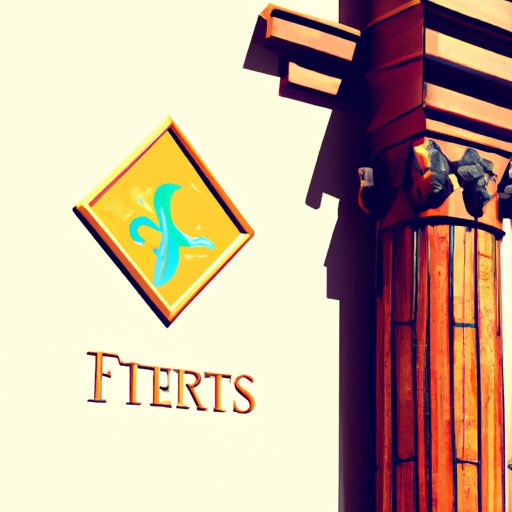Introduction
Non-fungible tokens (NFTs) are a type of digital asset built on blockchain technology. They are unique, one-of-a-kind tokens that can represent digital artwork, collectibles, real estate, and other items with value. Unlike cryptocurrencies, NFTs are not interchangeable or divisible; each token has its own distinct characteristics. As a result, they are becoming increasingly popular in the art world, as well as among collectors and investors.
A Beginner’s Guide to Buying and Selling NFTs
Understanding the process of buying and selling NFTs is essential if you want to get involved in the market. The first step is to find a reliable platform where you can purchase and trade NFTs. Popular platforms include OpenSea, Rarible, and SuperRare. Be sure to read up on the fees and terms of service for each platform before making a decision.
Once you’ve chosen a platform, you can start browsing the catalog of NFTs available for sale. You can also create your own marketplace if you already own NFTs and want to put them up for sale. When buying an NFT, it’s important to do your research and make sure you understand what you’re getting. Make sure you check out the seller’s reputation and verify the authenticity of the NFT before you buy.
How NFTs are Revolutionizing the Art Market
NFTs are transforming the art market in many ways. For starters, they are increasing accessibility by allowing people to buy and sell artwork without the need for an intermediary. This makes it easier for artists to reach new audiences and for collectors to acquire pieces from around the world. Additionally, NFTs are supporting creativity by providing artists with new ways to express themselves and monetize their work.
NFTs are also enhancing the artist-collector relationship. With traditional art, collectors only own the physical object; but with NFTs, they can also own the rights to the artwork and even receive limited edition prints or special access to events. This helps to create a deeper connection between the artist and collector, which is beneficial for both parties.

Understanding the Difference Between NFTs and Cryptocurrencies
It’s important to understand the difference between NFTs and cryptocurrencies. While both are digital assets built on blockchain technology, they have different properties and uses. NFTs are non-interchangeable and non-divisible, meaning each token is unique and cannot be broken down into smaller units. Cryptocurrencies, on the other hand, are fungible and divisible, meaning they can be exchanged for other currencies and divided into smaller units.
Another key difference is in usage. Cryptocurrencies are primarily used as a form of currency, while NFTs are used to represent tangible or intangible items with value. This could include digital artwork, collectibles, real estate, and more. In addition, some NFTs offer additional features, such as the ability to receive royalties or access exclusive content.
The Future of NFTs: What’s Next?
NFTs are still relatively new, so there is a lot of potential for growth and expansion in the coming years. One area of focus is expanding into other markets, such as gaming, music, and sports. Additionally, major companies like Microsoft and Google are starting to jump on board, which will help to increase adoption and visibility.
Integrating NFTs with smart contracts is another area of development. Smart contracts are self-executing agreements stored on the blockchain, and they can be used to automate the transfer of NFTs. This could open up new possibilities for creators and collectors, such as the ability to set up automatic royalty payments or auction off rare items.
NFTs for Collectors: Why They’re Attracting Attention
NFTs are attracting attention from collectors for a few reasons. First, they offer unique ownership of digital items, which is something that was previously impossible. Second, they provide potential investment opportunities, as the values of certain NFTs have been known to appreciate over time. Finally, NFTs have been gaining popularity in recent years, so now is a great time to get involved.

Investing in NFTs: Pros and Cons
While investing in NFTs can be profitable, it’s important to understand the benefits and risks involved. On the plus side, NFTs are generally low-cost investments and can be bought and sold quickly. Additionally, they can offer exposure to new markets, such as gaming and virtual reality. However, there are some drawbacks to consider as well, such as the lack of liquidity and the risk of fraud or theft.
If you decide to invest in NFTs, it’s important to do your due diligence and understand the market before making any purchases. It’s also wise to diversify your investments and keep an eye on the trends. Finally, remember to never invest more than you can afford to lose.
Conclusion
Non-fungible tokens (NFTs) are crypto assets that are revolutionizing the art market. They are unique, one-of-a-kind tokens that can represent digital artwork, collectibles, real estate, and other items with value. Understanding the process of buying and selling NFTs is essential if you want to take advantage of the benefits they offer. Additionally, it’s important to understand the difference between NFTs and cryptocurrencies, as well as the pros and cons of investing in NFTs. With the right knowledge and approach, NFTs can be a lucrative investment opportunity.
(Note: Is this article not meeting your expectations? Do you have knowledge or insights to share? Unlock new opportunities and expand your reach by joining our authors team. Click Registration to join us and share your expertise with our readers.)
